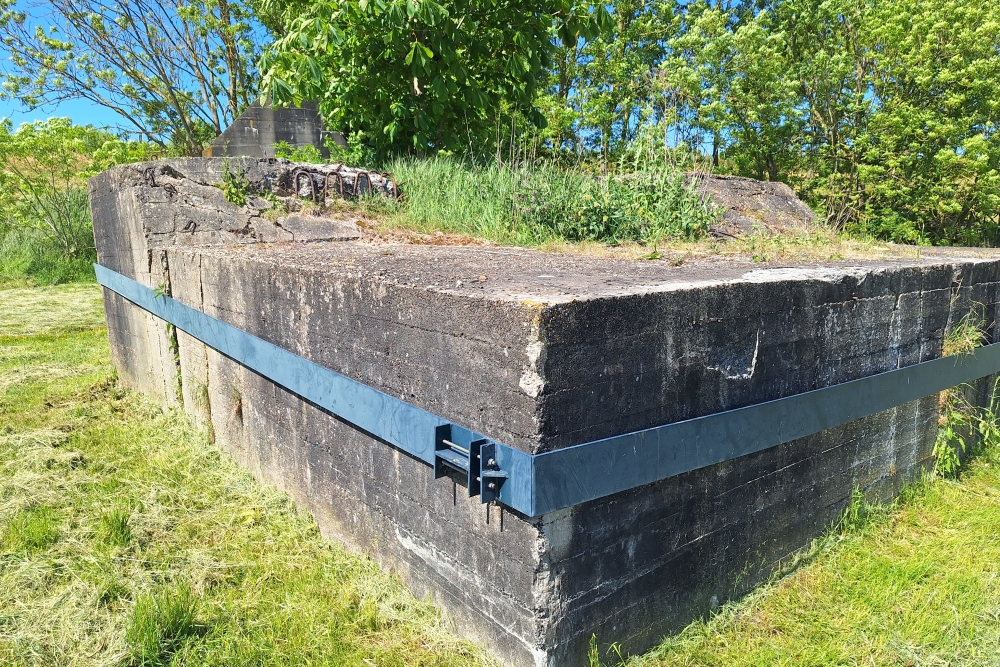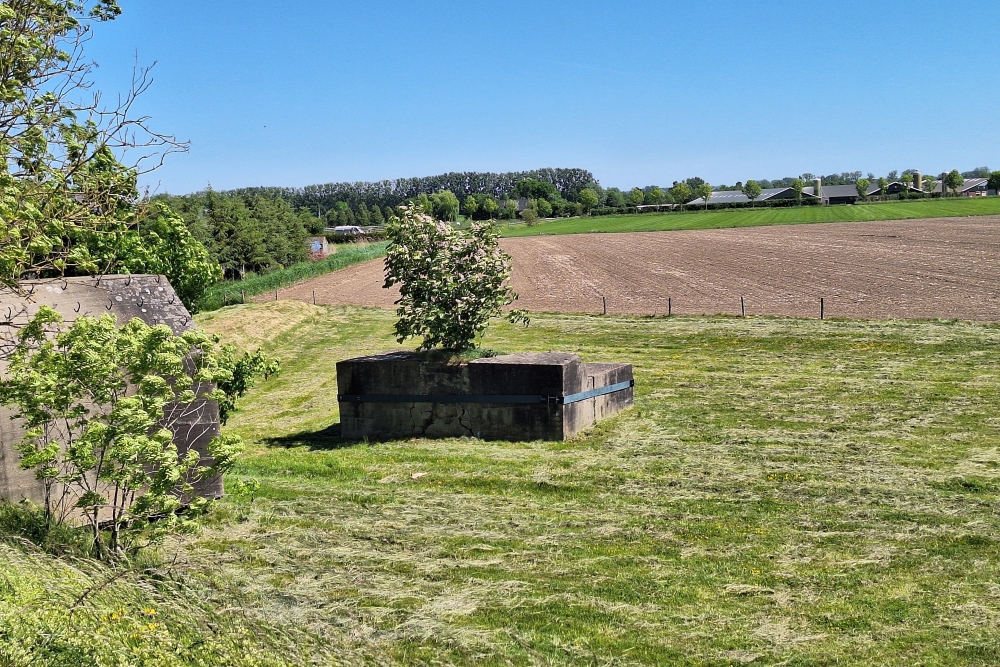Dutch G-Casemate Meerdijk
G-casemate Meerdijk — An impressive piece of Dutch military architecture
The G-casemate is a typical type of cast steel casemate that was built in the Netherlands around 1939-1940 as part of the defenses of the New Dutch Waterline and other lines such as the Grebbelinie and Peel-Raamstelling.
Characteristics of the G-casemate (variant G (180) hv):
Dome thickness: The dome is 10 cm thick, made of cast steel, and therefore very robust and resistant to enemy fire.
Orientation: The loophole is located directly opposite the entrance (180 degrees), which explains the variant name.
Access: There is a high access hatch that is completely embedded in the concrete, with a raised rear next to the dome.
Construction: Hundreds of copies of this variant were built along various lines in the Netherlands in the run-up to the Second World War.
Interior and equipment: The interior of the turret is compact, with a diameter of approximately 175 cm, but efficiently arranged:
Ventilation: There is a hand-powered ventilation unit (M'39) that creates an overpressure in the casemate to prevent enemy gases from entering, filters fresh air and extracts harmful smoke and carbon monoxide, especially from the firing of the machine gun.
Armament: The casemate was equipped with a heavy Schwarzlose machine gun M.08/15, which was mounted in a gas-tight spherical feedthrough. This machine gun had a smoke hood and a shell funnel to collect and discharge the hot shells.
Communication: A telephone console with a field telephone was present to keep in touch with other posts.
Practical facilities: There was a coat rack with clothes and helmets, there was a cooling water bucket with a hand pump to keep the machine gun cool, and there were storage shelves with ammunition cartridges (linen cartridge belts).
The casemates in the New Dutch Waterline, including the three still existing at Fort bij Vechten, had a heavier concrete body and thicker domes (14-17 cm) for extra protection.
Do you have more information about this location? Inform us!
Source
- Text: Fedor de Vries + RJArmy.nl
- Photos: RJArmy.nl
Nearby
Museum
Point of interest
- Trench Geofort - Herwijnen
- Fort Herwijnen - Herwijnen
- Information Sign Robert Milton Martin - Asperen
Monument
- Monument ‘Nova & Vetera’ Asperen - Asperen
- Logo Piron Brigade Leerdam - Leerdam
- War Memorial Leerdam - Leerdam
Cemetery
- Dutch War Grave Oosterwijk - Oosterwijk
- General Cemetery Leerdam - Leerdam
- Dutch War Graves Heukelum - Heukelum
Remembrance Stone
- Stumbling Stone Oranje Nassaulaan 16 - Leerdam
- Stumbling Stone Jeekelstraat 29 - Leerdam
- Stumbling Stones Voorstraat 93 - Beesd
Fortification
- Group Shelter Type P Meerdijk - Asperen
- Bunker Type P on Pillars - Acquoy
- Group Shelter Type P Meerdijk - Asperen








